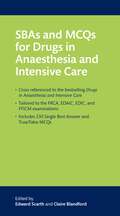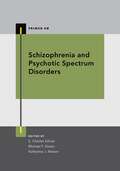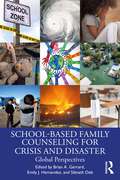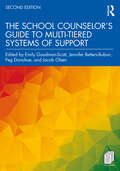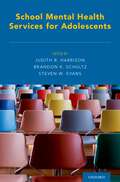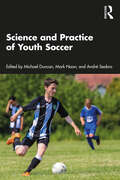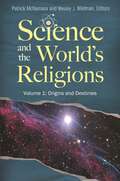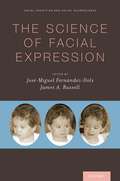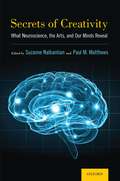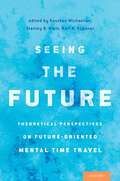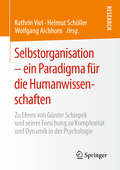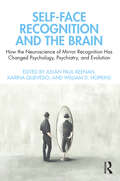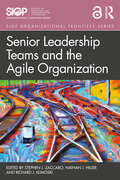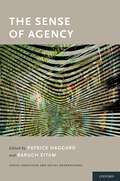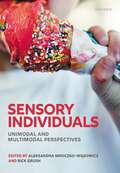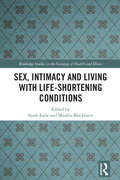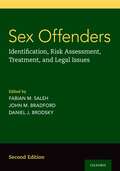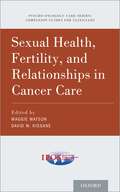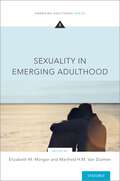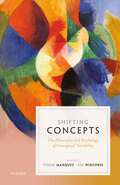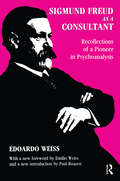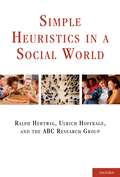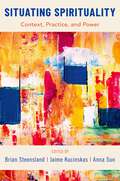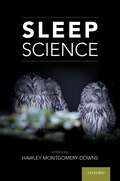- Table View
- List View
SBAs and MCQs for Drugs in Anaesthesia and Intensive Care
Designed to complement the highly popular Drugs in Anaesthesia and Intensive Care, this companion title provides high quality pharmacology practice questions for exam revision. Focusing specifically on pharmacological principles and agents, it is tailored for postgraduate exams in anaesthesia and intensive care including the FRCA, FFICM, the EDAIC, and the EDIC. Over 230 True/False MCQs and Single Best Answers help readers to test and consolidate knowledge learnt from Drugs in. Questions are arranged into 17 subject-themed chapters such as 'Intravenous anaesthetic agents' to focus revision. Structured questions and answers are accompanied by detailed explanations, cross-references to Drugs in where relevant, and further reading. Written by consultants and experienced trainees, SBAs and MCQs for Drugs in Anaesthesia and Intensive Care offers a true test of the reader's pharmacology knowledge, and is an essential purchase for anyone preparing for their anaesthetic and intensive care examinations, including the Fellowship of the Royal College of Anaesthetists (FRCA), the European Diploma in Anaesthesiology and Intensive Care (EDAIC), the Fellowship of the Faculty of Intensive Care Medicine (FFICM), and the European Diploma in Intensive Care Medicine (EDIC) examinations.
Schizophrenia and Psychotic Spectrum Disorders (Primer On)
Schizophrenia and Psychotic Spectrum Disorders aims to engage young caregivers in psychiatry, psychology, nursing and social work so that they will be able to become well informed about this significant--and at times confusing--illness. Because schizophrenia is considered to be one of the most complicated and severe psychiatric disorders, this book has the goal of summarizing key issues of the illness, such as its presentation, frequency and age of onset, and diagnostic characteristics. It also contains informative chapters about the pathophysiology of schizophrenia, ranging from brain development issues, genetics, and likely abnormalities in neurotransmitters. This book will give young professionals and those joining the field an excellent and accessible background to treatment. In this area, Schizophrenia and Psychotic Spectrum Disorders provides a comprehensive approach to diagnosis, treatment initiation, strategies for non-response, approaches of therapy, and importantly, ways to provide family therapy and support.
School-Based Family Counseling for Crisis and Disaster: Global Perspectives
School-Based Family Counseling for Crisis and Disaster is a practical handbook with a school-based family counseling and interdisciplinary mental health practitioner focus that can be used to mitigate crises and disasters that affect school children. Anchored in the school-based family counseling (SBFC) tradition of integrating family and school mental health interventions, this book introduces interventions according to the five core SBFC metamodel areas: school intervention, school prevention, family intervention, family prevention, and community intervention. The book has an explicit "how to" approach and covers prevention strategies that build student, school, and family resilience for handling stress and interventions that can be provided during and immediately after a disaster or crisis has occurred. The chapter authors of this edited volume are all experienced professors and/or practitioners in counseling, psychology, social work, marriage and family therapy, teaching, and educational administration. All mental health professionals, especially school-based professionals, will find this book an indispensable resource for crisis planning and developing a trauma-sensitive school.
The School Counselor’s Guide to Multi-Tiered Systems of Support
The revision of this innovative book provides school counseling students, practitioners, leaders, supervisors, and faculty with information and resources regarding the alignment and implementation of school counseling, specifically comprehensive school counseling programs. Complementing and expanding upon the audience’s knowledge and implementation of CSCPs such as the ASCA 2019 National Model, chapters include a strong theoretical and research base as well as related practical examples from the field—including case studies of practicing school counselors, and relevant, hands-on resources and tools to assist school counselors facilitate MTSS. New topics such as culturally sustaining and antiracist practice are woven into the chapters, in addition to covering the response to the COVID-19 pandemic, mental health crises, and capturing timely and current practices in K-12 education and school counseling. Innovative, unique, and including a plethora of useful tools and resources, this guide to MTSS and school counseling is ideal for graduate students and current school counselors in the field.
School Mental Health Services for Adolescents
Evidence-based mental health services are lacking in many school systems, but especially in secondary schools. Adolescents who can benefit from school mental health services are those who experience disruptive behavior disorders, anxiety, depression, alcohol/drug use, sexual or physical abuse, chronic health problems, crisis situations such as suicidal ideation or attempts, natural disasters, and exposure to community or family violence that can interfere with academic success. Currently, one-half of students with emotional or behavioral disorders drop out of school prior to graduation, pointing to the need to disseminate proven strategies that strengthen effective secondary school services. School Mental Health Services for Adolescents includes a range of expert guidance on implementation of school mental health services in secondary schools. The significance of this information cannot be overstated, as only 20% of children and adolescents who need such services receive them. Schools are a logical venue for service provision because emotional and behavioral problems interfere with academic achievement, and a lack of access to mental health services is a major barrier to treatment for youth. Authors discuss services that can be implemented by school-based professionals and methods of overcoming implementation barriers. Chapters cover the history and need for services, issues of identification and referral for treatment in schools, descriptions of evidence-based interventions, proposed service delivery models, assessment strategies, and integration of mental health programs in schools. This book will be a valuable resource for researchers, trainers of school mental health professionals, school administrators and supervisors, and school-based mental health providers including psychologists, counselors, and social workers.
Science and Practice of Youth Soccer
Soccer remains the world’s most popular sport with significant numbers of the world’s population engaged in grassroots soccer, particularly during childhood and adolescence. There is considerable scientific and practical data focused on soccer science available, most of which relates to elite performers and does not address the needs to grassroots coaches in understanding the science of soccer and translating this into practical messages and learning to help coaches maximise the experiences, enjoyment and development of the more than 250 million players who play grassroots soccer worldwide.Science and Practice of Youth Soccer presents a comprehensive and accessible introduction to key topics relating to effective player and team development in youth grassroots soccer. Written by international experts and practitioners in the field and with a particular emphasis on the development of children and youth, the book provides essential guidance of how science translates into practice for coaches and those working in youth grassroots soccer. Each chapter outlines the scientific research base for each topic, highlights myths and misconceptions that are commonplace in current practice of grassroots coaches and then provides practical solutions that coaches can take and use in their coaching practice.This book is key reading to those working in or studying sport and exercise science, sports coaching and sports development and also of interest to grassroots coaches and parents of soccer players.
Science and the World's Religions [3 volumes]: [3 volumes] (Brain, Behavior, and Evolution)
This trio of volumes contains essays that explore vital existential, moral, or metaphysical issues surrounding the relationship between the sciences and the world's religions.In Science and the World's Religions, experts with scientific and religious backgrounds explore vital existential or practical issues, drawing on whatever sciences are relevant and engaging at least two religious traditions. The multidisciplinary essays exhibit rigorous intellectual, scholarly thinking but are written to clearly communicate to educated adult lay readers. The first volume addresses questions about the origins and purpose of the cosmos and the human project. The second volume investigates the roles of religion and spirituality in human existence, considering issues ranging from the brain and religious experience to the human life cycle. The third volume tackles controversies in which both religion and science are stakeholders, showing how both can deepen understanding and enrich human experience. Together, these three books present readers with powerful tools that enable them to think through the challenge of integrating science with their religious beliefs and spiritual practices.
The Science of Facial Expression (Social Cognition and Social Neuroscience)
The importance of facial expressions has led to a steadily growing body of empirical findings and theoretical analyses. Every decade has seen work that extends or challenges previous thinking on facial expression. The Science of Facial Expression provides an updated review of the current psychology of facial expression . This book summarizes current conclusions and conceptual frameworks from leading figures who have shaped the field in their various subfields, and will therefore be of interest to practitioners, students, and researchers of emotion in cognitive psychology, neuroscience, biology, anthropology, linguistics, affective computing, and homeland security. Organized in eleven thematic sections, The Science of Facial Expression offers a broad perspective of the "geography" of the science of facial expression. It reviews the scientific history of emotion perception and the evolutionary origins and functions of facial expression. It includes an updated compilation on the great debate around Basic Emotion Theory versus Behavioral Ecology and Psychological constructionism. The developmental psychology and social psychology of facial expressions is explored in the role of facial expressions in child development, social interactions, and culture. The book also covers appraisal theory, concepts, neural and behavioral processes, and lesser-known facial behaviors such as yawing, vocal crying, and vomiting. In addition, the book reflects that research on the "expression of emotion" is moving towards a significance of context in the production and interpretation of facial expression The authors expose various fundamental questions and controversies yet to be resolved, but in doing so, open many sources of inspiration to pursue in the scientific study of facial expression.
Secrets of Creativity: What Neuroscience, the Arts, and Our Minds Reveal
Secrets of Creativity: What Neuroscience, the Arts, and Our Minds Reveal draws on insights from leading neuroscientists and scholars in the humanities and the arts to probe creativity in its many contexts, in the everyday mind, the exceptional mind, the scientific mind, the artistic mind, and the pathological mind. Components of creativity are specified with respect to types of memory, forms of intelligence, modes of experience, and kinds of emotion. Authors in this volume take on the challenge of showing how creativity can be characterized behaviorally, cognitively, and neurophysiologically. The complementary perspectives of the authors add to the richness of these findings. Neuroscientists describe the functioning of the brain and its circuitry in creative acts of scientific discovery or aesthetic production. Humanists from the fields of literature, art, and music give analyses of creativity in major literary works, musical compositions, and works of visual art.
Seeing the Future: Theoretical Perspectives on Future-Oriented Mental TimeTravel
Episodic memory is a major area of research in psychology. Initially viewed as a distinct store of information derived from experienced episodes, episodic memory is understood today as a form of mental "time travel" into the personal past. Recent research has revealed striking similarities between episodic memory-past-oriented mental time travel-and future-oriented mental time travel (FMTT). Seeing the Future: Theoretical Perspectives on Future-Oriented Mental Time Travel brings together leading contributors in both empirical and theoretical disciplines to present the first interdisciplinary look at the human ability to imagine future scenarios. Chapters focus on the challenging conceptual and theoretical questions raised by FMTT, covering themes such as: varieties of future-oriented cognition; relationships between FMTT and episodic memory; subjective temporality in FMTT; the self in FMTT; and functional, evolutionary and comparative, developmental, and clinical perspectives on FMTT. With its focus on the conceptual issues at the heart of fast-developing research on FMTT, this edited volume will serve graduate students to senior scholars working on or interested in FMTT and related areas as a synthesis of current theoretical thinking and a source of questions for future FMTT research.
Selbstorganisation – ein Paradigma für die Humanwissenschaften: Zu Ehren von Günter Schiepek und seiner Forschung zu Komplexität und Dynamik in der Psychologie
Dieser Sammelband zeichnet ein umfassendes Bild der Selbstorganisation in den Humanwissenschaften und stellt sich den folgenden Fragen: Was ist Selbstorganisation? Welche Prozesse in den Humanwissenschaften sind selbstorganisiert? Was sind die Merkmale solcher Prozesse und wie kann man sie identifizieren? Welche Möglichkeiten der Steuerung gibt es? Wie können Prozessmonitoring und Prozessfeedback auch in Therapie und Beratung unterstützend helfen? Die Beiträge befassen sich mit einem breiten Spektrum an Themen, Methoden und Konzepten der Selbstorganisation komplexer Systeme, u.a. aus der Synergetik, nichtlinearen Dynamik und Chaostheorie.
Self-Face Recognition and the Brain: How the Neuroscience of Mirror Recognition Has Changed Psychology, Psychiatry, and Evolution
Self-Face Recognition and the Brain explores a fundamental cornerstone of human consciousness; how recognizing ourselves leads to a better understanding of the brain and higher-order thinking.Featuring contributions from an interdisciplinary range of researchers, each chapter provides a unique insight into one aspect of self-face recognition. The book begins by introducing readers to the concept of self-face recognition, covering issues like the mirror-test and whether animals can recognize themselves, before addressing the role of neural correlates and attempts at localizing consciousness. It then discusses various disorders and the impact they can have on self-face recognition before considering how neuroscience can heighten our understanding of the field.It will be an essential read for all researchers of self-face recognition, from psychology, philosophy, and neuroscience backgrounds.
Senior Leadership Teams and the Agile Organization (SIOP Organizational Frontiers Series)
Senior Leadership Teams and the Agile Organization builds on existing knowledge in the leadership, teams, and strategic management literatures to examine and explore how senior leadership teams drive the dynamic capabilities of organizations. Organizational agility is a key dimension of organizational performance. This volume focuses on senior leadership team processes and attributes that facilitate organizational agility and the organization’s capacity to perform and rapidly pivot in response to shifting strategic demands. Chapters summarize the current state of knowledge, examine past research and theory, define research and theoretical gaps, and consider how to address these gaps. In so doing, they offer an understanding of how senior leadership teams drive and enable organizational activity. The book is essential reading for researchers and professionals looking to understand the intersection of leadership, team dynamics, organizational psychology, organizational psychology, and strategic management, particularly in relation to organizational agility and the senior leadership team.
The Sense of Agency (Social Cognition and Social Neuroscience)
Agency has two meanings in psychology and neuroscience. It can refer to one's capacity to affect the world and act in line with one's goals and desires--this is the objective aspect of agency. But agency can also refer to the subjective experience of controlling one's actions, or how it feels to achieve one's goals or affect the world. This subjective aspect is known as the sense of agency, and it is an important part of what makes us human. Interest in the sense of agency has exploded since the early 2000s, largely because scientists have learned that it can be studied objectively through analyses of human judgment, behavior, and the brain. This book brings together some of the world's leading researchers to give structure to this nascent but rapidly growing field. The contributors address questions such as: What role does agency play in the sense of self? Is agency based on predicting outcomes of actions? And what are the links between agency and motivation? Recent work on the sense of agency has been markedly interdisciplinary. The chapters collected here combine ideas and methods from fields as diverse as engineering, psychology, neurology, neuroscience, and philosophy of mind, making the book a valuable resource for any student or researcher interested in action, volition, and exploring how mind and brain are organized.
Sensory Individuals: Unimodal and Multimodal Perspectives
Sensory Individuals: Unimodal and Multimodal Perspectives provides an interdisciplinary, well-balanced, and comprehensive look at different aspects of unisensory and multisensory objects, using both nuanced philosophical analysis and informed empirical work. The research presented in this book represents the field's progression from treating neural sensory processes as primarily modality-specific towards its current state of the art, according to which perception, and its supporting neural processes, are multi-modal, modality-independent, meta-modal, and task-dependent. Even within such approaches sensory stimuli, properties, brain activations, and corresponding perceptual phenomenology can still be characterized in a modality-specific way. The book examines the basic building blocks of human perception, and whether they are best understood as sensory modality dependent units of different forms or multimodal perceptual objects. The book combines a variety of innovative and integrative angles to explore the topic and acts as a catalyst for an increasingly diverse field of research, which is in an exciting phase of growth and advancement. New questions are arising as quickly as they are being answered, and the collection Sensory Individuals provides an original and up-to-date addition to the field.
Sex, Intimacy and Living with Life-Shortening Conditions
This multi-disciplinary and inclusive collection brings together theoretically informed and empirically focused research on sex, intimacy and reproduction in relation to young people and adults with life-shortening conditions. Advances in healthcare mean that increasing numbers of young people with life-shortening conditions are transitioning into adulthood. Issues such as sex and intimacy, dating and relationships, fertility and having children are increasingly relevant to them and to the people that support them, including families, carers, practitioners and professional education, health and social care agencies. This three-part book explores the relevance and significance of this field, examines everyday experiences, and highlights the challenges faced by individuals and organisations in addressing the needs of such people in daily life and in the context of practice. Drawing on perspectives from sociology, disability studies, epidemiology, health policy, psychotherapy, legal studies, queer studies and nursing, this ground-breaking volume is written by academics, policy makers, practitioners and experts by experience. It is an essential read for all those practising and researching in the fields of sexuality, chronic illness and disability and transition.
Sex Offenders: Identification, Risk Assessment, Treatment, and Legal Issues
Sex Offenders, 2nd Edition, offers the most up-to-date research involving the treatment and management of paraphilic and non-paraphilic sex offenders with and without comorbid mental illness or intellectual disability. Providing in-depth coverage on issues related to identification, risk assessment and management, treatment, and legal solutions, this volume seeks to ensure public safety while at the same time maintaining medical integrity and respect for due process. The Second Edition newly addresses LGBTQ issues as well as new categories of risk potentially unaddressed by changing sex offender registry laws. Bringing together the foremost international and interdisciplinary authors and perspectives on the topics, this book is intended for psychiatrists, clinical psychologists, and researchers who work with sex offenders, as well as attorneys, members of the judiciary, and policymakers.
Sexual Health, Fertility, and Relationships in Cancer Care (Psycho Oncology Care)
Sexual Health, Fertility, and Relationships in Cancer Care provides clinical management guidelines for the impact of cancer and oncology treatments on sexual health, fertility and relationships. Employing a practical toolkit format, this volume addresses a spectrum of key topics including: provision of onco-fertility and sexual health support, LGBTQ+ issues, support for adolescents and young people, effective psycho-educational/psycho-sexual interventions, and managing relationships for individuals and couples. Part of the Psycho-oncology Care: Companion Guides for Clinicians series, this concise pocket guide is an ideal resource for cancer medical specialists, psycho-oncologists in training, specialist nurses/nurse consultants, and allied health professionals to use as a quick reference in everyday practice. Pitched at intermediate to advanced level skills, this companion guide can be used as a standalone, or alongside existing oncology and psycho-oncology training programs.
Sexuality in Emerging Adulthood (Emerging Adulthood Series)
Sexuality in Emerging Adulthood provides a comprehensive overview of sexuality at the stage straddling adolescence and adulthood. The first section of the volume offers conceptualizations and foundational perspectives on sexuality in emerging adulthood, with topics including theory, developmental considerations, sexual behavior, sexual beliefs and attitudes, associations with romance, casual sex, and sexual orientation. The second section systematically examines contexts and socializing agents of sexual development, including parents, peers, media, and religion. The third section narrows in on the overarching theme of the series by addressing factors leading to flourishing and floundering in the area of sexuality during emerging adulthood, such as effects of early adversity, sexual health, sexual well-being, sexuality and mental health, and sexual assault. Accompanying seven of the chapters in the volume are brief scientific reports offering new related research. The volume also contains four method tutorials that discuss topics in sex research such as ethical considerations, recruitment and incentive strategies, and identity-affirming methods. Concluding with innovative new perspectives on the integration of sexual health promotion and sexual violence prevention, this volume is crucial reading for academic scholars and those working with and supporting emerging adults.
Shifting Concepts: The Philosophy and Psychology of Conceptual Variability
Concepts stand at the centre of human cognition. We use concepts in categorizing objects and events in the world, in reasoning and action, and in social interaction. It is therefore not surprising that the study of concepts constitutes a central area of research in philosophy and psychology, yet only recently have the two disciplines developed greater interaction. Recent experiments in psychology that test the role of concepts in categorizing and reasoning have found a great deal of variation, across individuals and cultures, in categorization behaviour. Meanwhile, philosophers of language and mind have investigated the semantic properties of concepts, and how concepts are related to linguistic meaning and linguistic communication. A key motivation behind this was the idea that concepts must be shared across individuals and cultures. With the dawn of experimental philosophy, the proposal that the experimental data from psychology lacks relevance to semantics is increasingly difficult to defend. This volume brings together leading psychologists and philosophers to advance the interdisciplinary debate on the role of concepts in categorizing and reasoning, the relationship between concepts and linguistic meaning and communication, the challenges conceptual variation poses to communication, and the social and political effects of conceptual change.
Sigmund Freud as a Consultant
Sigmund Freud, despite his own reservations about philosophy, has by now earned a secure place as a philosopher. For some, Freud ranks high among modem philosophers of science, while for others he stands as one of our great modern ethical teachers. One of the great beauties of Edoardo Weiss' Sigmund Freud as a Consultant is that here we mainly find Freud as a dedicated practicing clinician. Not only did he regularly treat over half a dozen patients a day in Vienna, but he also tried through his correspondence to keep in touch with the clinical activities of his disciples abroad.Edoardo Weiss was one such disciple in whom Freud saw a central hope for the fate of psychoanalysis in Italy. Freud took Weiss into his confidence, and in his discussion of Weiss' patients one can find some of his most characteristic clinical points of view, including his moral biases both in favor of certain cases as well as against other types of human dilemmas. In its concrete details the book has much to teach. Weiss's narrative provides the circumstances surrounding the clinical cases for which he asked Freud's help. Two of Weiss's relatives went for analysis with Freud in Vienna, and they clearly did not hold back from Weiss what they had learned as well as what they considered the major limitations of Freud's approach. It is also worth noting that this volume contains the only known letter we have in which Freud openly discusses his own analysis of his youngest child, Anna.Weiss, who later left Italy and practiced for many years in Chicago, is now honored as a pioneering figure in the history of the Italian reception of Freud's work. Today the clinical practice of psychoanalysis and all things connected to it are flourishing there and the general ideology of contemporary Italy has been shaped and affected by the message Freud had to offer. Weiss' account of his relationship with Freud, as well as the clinical particularities documented here, form a permanent addition to our understanding of the early years of psychoanalysis.
Simple Heuristics in a Social World (Evolution and Cognition)
Simple Heuristics in a Social World invites readers to discover the simple heuristics that people use to navigate the complexities and surprises of environments populated with others. The social world is a terrain where humans and other animals compete with conspecifics for myriad resources, including food, mates, and status, and where rivals grant the decision maker little time for deep thought, protracted information search, or complex calculations. Yet, the social world also encompasses domains where social animals such as humans can learn from one another and can forge alliances with one another to boost their chances of success. According to the book's thesis, the undeniable complexity of the social world does not dictate cognitive complexity as many scholars of rationality argue. Rather, it entails circumstances that render optimization impossible or computationally arduous: intractability, the existence of incommensurable considerations, and competing goals. With optimization beyond reach, less can be more. That is, heuristics--simple strategies for making decisions when time is pressing and careful deliberation an unaffordable luxury--become indispensible mental tools. As accurate as or even more accurate than complex methods when used in the appropriate social environments, these heuristics are good descriptive models of how people make many decisions and inferences, but their impressive performance also poses a normative challenge for optimization models. In short, the Homo socialis may prove to be a Homo heuristicus whose intelligence reflects ecological rather than logical rationality.
Situating Spirituality: Context, Practice, and Power
Spirituality is in the spotlight. While levels of religious belief and observance are declining in much of the Western world, the number of people who identify as "spiritual but not religious" is on the rise. Practices such as yoga, meditation, and pilgrimage are surging in popularity. "Wellness" regimes offer practitioners a lexicon of spirituality and an array of spiritual experiences. Commentators talk of a new spiritual awakening "after religion." And global mobility is generating hybrid practices that blur the lines between religion and spirituality. The essays collected in Situating Spirituality: Context, Practice, and Power examine not only individual engagements with spirituality, but they show how seemingly personal facets of spirituality, as well as definitions of spirituality itself, are deeply shaped by religious, cultural, and political contexts. The volume is explicitly cross-national and comparative. The contributors are leading scholars of major global regions: North America, Central America, East Asia, South Asia, Africa and the African Diaspora, Western Europe, and the Middle East. They study not only Christian, Jewish, and Islamic societies, but also non-Abrahamic societies with native as well as transnational sacred traditions.
Sleep Science
Sleep's purposes and benefits - and the impacts of not sleeping well or well enough - have been intensively investigated as a modern science for nearly 60 years. Sleep Science is an advanced introduction to the subject of sleep and sleep disorders. Designed for upper-division undergraduate students who have completed introductory prerequisites in behavioral principles, systems physiology, and research methods, it is also appropriate for the post-graduate student adding sleep to their training portfolio. Sleep Science is ideal for use in a standard semester- or quarter-based course, and is organized into thematic sections: normative adult sleep; lifespan development; sleep and circadian disorders and treatments; sleep assessments; and sleep as a profession. Cross-cutting issues are specifically addressed in chapters such as women's health and culture. Chapters conform to a standardized layout and are authored by subject matter experts, all of whom are also sleep educators. Edited for a consistent voice and continuity, each chapter features explanatory figures, tables, and/or photographs to illustrate key concepts.
Social Behavior as Resource Exchange: Explorations into the Societal Structures of the Mind
This book complements and deepens Uriel G. Foa's and Edna B. Foa's 1974 presentations of resource theory of social exchange by expanding on the original roots and subsequent refinements and developments of Social Resource Theory (SRT). The book opens with an abbreviated version of Foa and Foas' argument from the out-of-print original, which is increasingly referred to by current researchers. The next section builds upon this foundation to explore current issues, developments, and applications of SRT as described by eleven invited scholars, including three chapters on new developments within psychology. With its contemporary overview of the theoretical extensions of social resource theory and related empirical research, this book offers far-reaching societal implications for most behavioral and social science disciplines.
